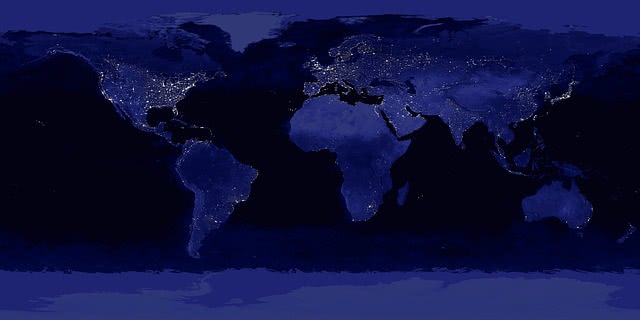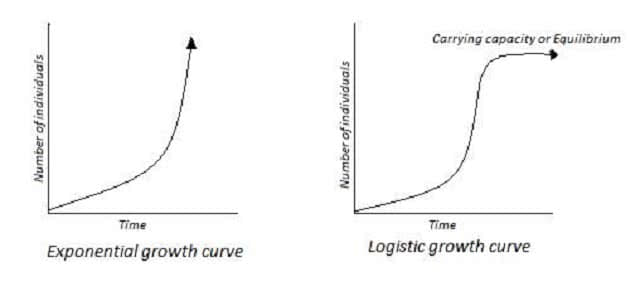Population dynamics is a study of the variation in the population of a particular species at a location over a given period of time. The population of each species has a unique physical distribution which changes over time and space based on how successful the species has been in thriving in that particular environment. The population of a species may contain individuals of different age and sex that number of which changes over time, either growing or shrinking. Population dynamics helps to answer how, when and why the changes occur. The study of population dynamics in Biology is a very effective way of evaluating the impact of the physical environment on the species. The change in the density of the population of a particular species in one location is dependent on the births, deaths, immigration, and migration of the species. The values of these four factors birth (natality), deaths (mortality), immigration (influx) and emigration (outflux) help in determining whether the population in a given area will increase or decrease. A population whose density remains stable is said to be in equilibrium.
Related: What is Urban Growth, What is Population Projection
Population dynamics as a branch of study not only deals with the study of the composition of the population but also includes the study of the various environmental processes that influence the change in the density.

Some of the environmental factors include the availability of resources, climate, possible predators, availability of reproductive conditions and possible pathogens.
- The availability of abundant resources helps in the growth of a population which not only helps to sustain a greater number of individuals of the same species but also promotes immigration. However, this increase in population will be followed by a decrease as the resources get limited and subsequently dry out. This results in starvation and mortality accompanied by emigration.
- Climatic variations also lead to significant variation in the population of a particular species. This is quite apparent in many bird species that have moved to the Endangered category due to the global changes in the weather conditions. While warmer climates have resulted in the increase of population density of certain species it has led to the drastic drop in many cold weather species.
- The presence or absence of predators in an ecological system can greatly affect the population of a species. The presence of a predator helps in a great way to maintain the ecological balance in the location. The ratio of the predator to prey has to be such that neither is forced to extinction. Too many predators in an area will lead to a shortage of prey which will subsequently lead to the starvation of the predators and their deaths. A large number of preys would mean greater use of the resources such that neither the prey nor the predator can survive.
- The survival of a species is greatly dependent on the birth rate. If the conditions are not conducive for the reproduction and nurturing of the off-springs the population will see a steady decline as the age of the population keeps growing without the addition of younger individuals.
- A very versatile and abundant environment may not always be supportive of the survival of a species. This may be due to the presence of a pathogen which can infect and raise the death rate or mortality in a species. A study of the population dynamics caused due to the presence of a pathogen can give an understanding to what extent it can affect the population in a certain location.
There are various other environmental factors that can influence which have been incorporated into the study of the Population Models.
Methods used to measure the population Density
Various quantitative methods are used by biologists to determine the population density in an area.
- One simple method used is to count all the individuals in an area. This is called as the Total count or Complete count method. This method is fine to be used in determining the population density of humans in an area. However, this may not be a sound way to determine the density of animal species or plant species in a particular area. In such cases estimates of the population is obtained by alternative methods.
- One such method is the Quadrat method. The Quadrat method is effective in measuring the population densities of a species that is more or less uniformly distributed over the area of study. In the Quadrat method, all the individuals of a species are counted in a smaller area called as a subplot and the number derived is used to determine the total number of individuals in the entire habitat or area of study. This, of course, does not yield the exact population but gives an estimate of the population density based on the consideration that the population is evenly spread across the area. This method is also known as the Incomplete count method. It is commonly used in the study of plant species and other species that are not very mobile.
- For a more mobile species, the Mark-recapture method is used. This method is popularly used to estimate populations of game and non-game animals and some fishes. First used by Petersen in 1896 to the study the European Plaice in the Baltic Sea and later used by Lincoln in 1930 to estimate the population of ducks. It is often called as the Lincoln-Petersen index which involves the capture and marking of a number of a number of animals and releasing them back to the population and then determining the ration of the marked to unmarked animals in the second capture of animals
P=MC/R
Where P is the population estimate
M is the number of marked animals in the first capture
C is the number of animals in the second capture
R is the number of marked animals found in the second capture.
- Another method of estimation of population density is Indirect count method. It may not be always possible to obtain the visual or auditory data to estimate the population; in this case, the indirect method is implemented to determine the population density. Here indirect signs of the presence of an animal are used as reference indices for relative abundance of the species. For example in the area of study, the deer faecal pellets are removed and then after a specific interval of time all the new piles of faecal pellets are counted to help determine the number of deer in that area. Other common indices used are dens, nests, birds singing.
Population Types
There are basically two types of the population; structured and unstructured. In the structured population, all the individuals in the population have a unique way of reacting to the environment. They vary in the way they are susceptible to the general ecological pressures. While some may be more susceptible to reproduce more in a given condition, others might be susceptible to mortality. On the other hand in the unstructured population type, all the individuals in the species more or less react in the same way. They may have the same growth rate and lifespan with similar reproductive capacities.
Population Models
Environmental circumstances influence population dynamics to a great extent. It is one of the main factors that determine the abundance of a species in a particular location or its entire absence.
1.Exponential Growth
In this population model, it is assumed that the environmental conditions are absolutely supportive of the biological needs of the species which results in low mortality and high natality accompanied by progressive immigration from other areas. This leads to a high increase in the population of the species in that area. This model is termed as the Exponential growth model. It is often called as the J-shaped growth as the graphical representation of the population growth resembles the letter “J”. The growth rate remains constant and does not depend on the population density due to which it is called also referred to as the density-independent growth.

Although it is rare to find an ecological niche that so abundantly supports the growth of a species it is not unheard of. However, this is not a sustainable growth and is inevitably followed by a population crash. The constant growth leads to a rapid exhaustion of resources to sustain life and consequently becomes uninhabitable by the species due to shortages.
2. Logistic Growth
This model of population growth is also known as density-dependent growth or the S-shaped growth. When the density of population is low the growth rate is very high. But as the population density increases the growth slows down and finally reaches its saturation point and then starts to decrease in size. The starting phase in this population growth resembles that of the J-shaped or exponential growth rate. After some time however, it gains stability and remains constant. This represents the population that the environment in that area can support. It is termed as the carrying capacity and represents the maximum number that the habitat can support and sustain. If more individuals are added to the population then the population will start to decrease until it reaches the carrying capacity or equilibrium of that environment. The carrying capacity may, however, change with time depending on the biotic and abiotic conditions that prevail in the area.
3. Lotka-Volterra models
In nature or a said habitat, a single species does not exist in isolation. It lives and grows in tandem with various other species. The population growth of a species is in many ways impacted by the various other species that cohabit the same environment. This is not just true for a predator and prey relationship. There are various species that depend on the same resources of the environment for sustenance. This leads to a competition between the two species for survival. It has been seen in many co-existing species that while some are able to survive in unison in the same environment others are driven into extinction by the dominating species.
Related: Methods of Population Projection
Importance of the study of Population dynamics
There is a growing need for awareness of the importance of the study of Population Dynamics. The study of this dynamism gives us an understanding of the link between the environmental changes and the subsequent changes in the population of a species.
Assessing the impact of a biological effect on a species helps us to find ways to curb the negative factor that is influencing the decline of a population. With the growing global environmental changes, a number of species are on the brink of extinction. Population dynamics study helps the biologists identify these species and work towards the conservation of these endangered varieties of plant and animal life. The high mortality rate and the low reproductive rates have led to an increasingly aging population which has become a threat to many animal species. Although migration is always an option for an animal species in order to reach an environment that is more habitable, a global downslide in the environmental conditions has left little chance for the migrating species to thrive in a different location.
Also Read: Population Density & Factors affecting it